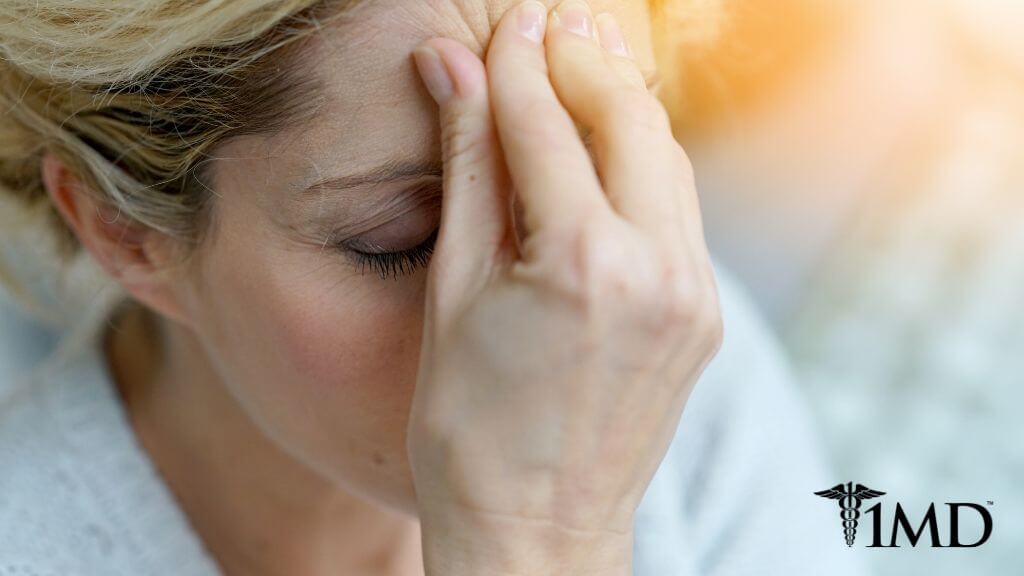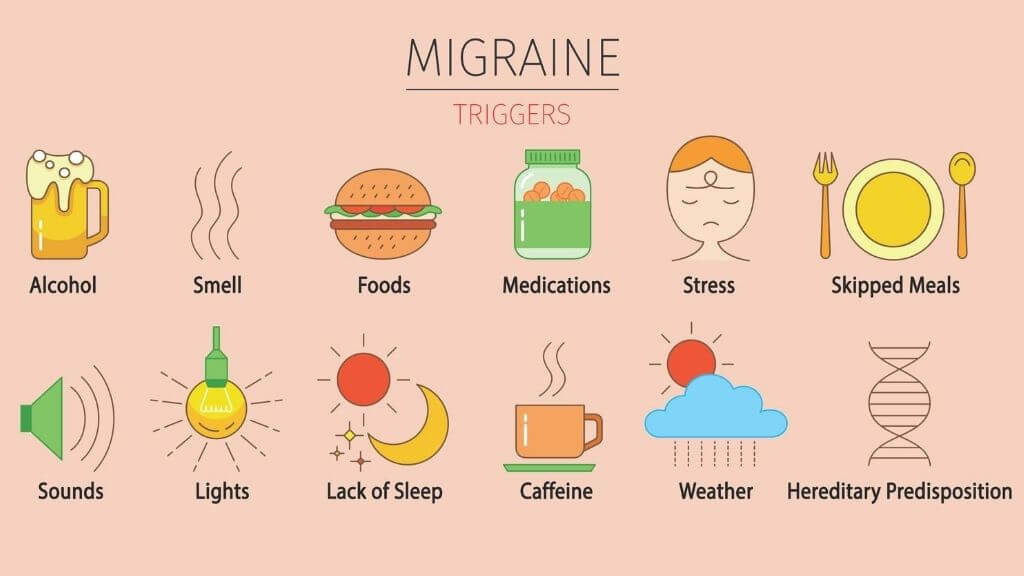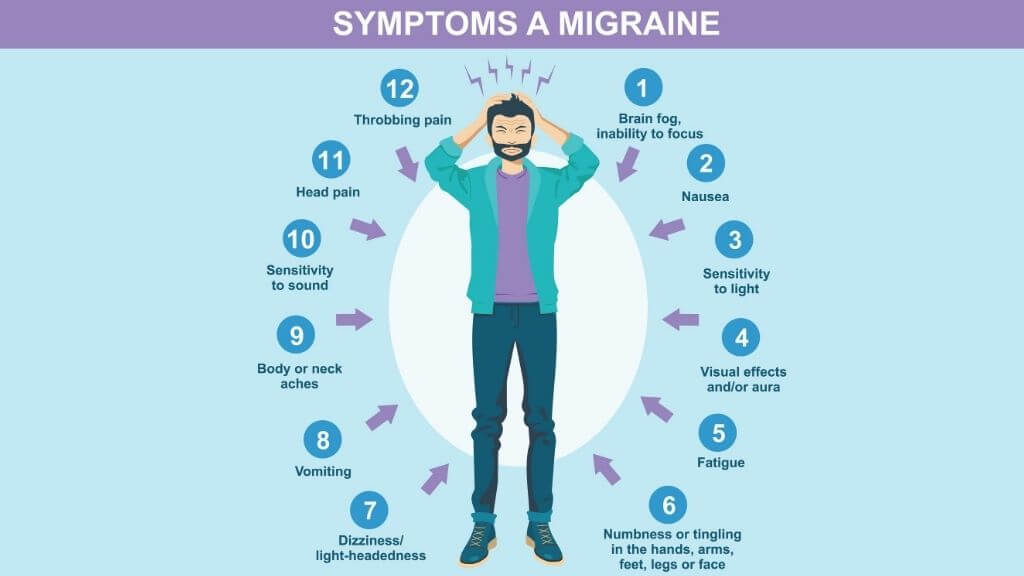The 10 Most Common Migraine Headache Triggers and What You Can Do
7 minute read
Do you suffer from migraines that seem to crop up out of nowhere, suddenly waylaying your entire day and sending you running to the nearest dark room? You’re not alone; it’s estimated that migraines affect 20% of women and 10% of men.
While some of these people are lucky enough to only experience a migraine once in a while, others have a chronic migraine condition. Before we take a look at what causes migraines and how having this knowledge can help you avoid or overcome them, it’s important to look at what a migraine is.
What Is a Migraine?
Many people think that migraines are just really bad headaches. This doesn’t quite hit on the true magnitude of this condition. lasting 4 to 72 hours that restrict your daily activity. In most situations, light and/or sound sensitivity or nausea are present, too.
While many people also experience other symptoms, like throbbing on one side of the head or auras (a short period of visual disturbance), these do not need to be present for the headache to be in the migraine area.
Making the definition even a little more confusing, not all migraines need to be so disabling that you cannot perform your daily activities. In fact, a headache may not even be involved in the migraine, as it’s possible to have a migraine with auras but no headache presenting.

What Causes a Migraine?
For a long time, it was believed that migraines arose from changes in the blood vessels that supply the head and brain with blood. Today it’s believed that migraines are more genetic in nature and brought about by a specific trigger, typically an environmental factor.
According to the American Migraine Foundation, these are the most common triggers of migraines:
1. Stress
2. Changes in sleep or an irregular sleep schedule
3. Hormones
4. Caffeine and alcohol—red wine in particular
5. Changes in weather—change in barometric pressure especially
6. Diet, such as chocolate, cheese, dairy, artificial sweeteners, cured meats, and MSG
7. Dehydration
8. Light, including natural, fluorescent, and flickering lights.
9. Smells, especially strong odors and aromas, like perfume, gasoline, pungent foods, and chemicals
10. Medication overuse, including migraine medication

The best way to figure out what is causing your migraines is to keep a headache diary that tracks times, intensity, duration, and any surrounding factors that could be your trigger. There is a pattern of pain associated with migraines that includes the entire episode and the path of symptoms. This is especially useful in determining the nature.
Remember, while the 10 triggers above might be causing your migraines, you may have a unique trigger that’s not listed. Your headache journal will help you figure out what it is.
Migraine Symptoms
Even if you know your trigger, the symptoms can be a little confusing. That’s because every individual reacts so differently to their triggers that it’s hard to nail down a handful of symptoms and create a migraine checklist.
The following is a list of possible symptoms that you may have with your migraine, but don’t expect to have all of them—it’s more of a mix-and-match type of condition, where you may have one or several symptoms. It’s also possible that during one bout of migraine you present with certain symptoms and then the next migraine prompts an entirely different set of symptoms.

♦ Headaches last 4 to 72 hours if untreated or treated unsuccessfully
♦ Headache felt only in one side of the head
♦ Pulsating or throbbing sensation
♦ Pain intensity classified as moderate to severe
♦ Physical activity can cause or aggravate it
♦ Feeling nauseated and possibly vomiting due to nausea
♦ A feeling of dizziness or vertigo
♦ Light sensitivity
♦ Seeing auras, especially around lights
♦ Sound sensitivity
♦ Scent sensitivity
♦ Lack of appetite
♦ Seeing flashing lights or strange shapes
♦ Vision becomes blurry or wavy
♦ Tingling in extremities before onset
♦ Difficulty speaking (rare)
♦ Some paralysis (rare)
It’s easy to see that this is not a progressive list and one that each sufferer can relate to. But once someone has a few migraines, they tend to become familiar with their own symptoms and the feeling that a migraine is coming on.

How to Avoid Migraines and Find Migraine Treatment Options
The first step in avoiding migraines and treating them is the same: Journal your migraines to learn as much about them as you can. With this information, you’re better armed to fight back.
Once you recognize what your migraine triggers are, you can avoid them whenever possible. This sounds simple and obvious, but it’s not always easy to avoid things like other people’s perfumes and flashing lights. The best you can do is ask others around you to cooperate and prepare for all situations.
Some people report having success using dietary supplements, herbal medicine, and directed exercises, or relaxation techniques. Others find that they need to have prescribed medications or even psychological treatment.
| Related: Is Curcumin the Migraine Treatment Alternative? |
If medication is what you need to combat a migraine, it’s best to seek professional medical help and discuss your over-the-counter and prescription options. It might take a while to find the right combination of techniques that work for you, but once you do you should be able to manage your symptoms better.
The Bottom Line
Migraines are much more than a headache and people that suffer from them find that they can be very debilitating and can interrupt their day-to-day activities.
Migraines can bring on many symptoms that extend well beyond a headache, in fact a migraine can be present without a headache. Each person will have their own set of symptoms that cue them into the fact that they’re having or about to have a migraine.
Similarly, the triggers that can cause migraine are unique to the individual. The top 10 triggers are very common, but what bothers one person may have no effect at all on another. Knowing what your triggers are is a big help in finding a way to avoid migraine or seek treatment.












